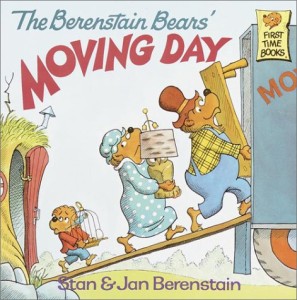
Image Credit: Active Rain
By Relocation.com
There are several things to think about when changing schools for the kids. Starting with the educational offerings and then questioning the safety, affordability, transportation options and location. If you’re moving somewhere far (or at least far enough to change school districts), here are some issues you may think about when choosing a new school for your kids.
1. Security – Choose a school with great security features for the kids. Find out what they do to keep your kids safe from harm, and if there have been any other issues in the past.
2. Level of education – Schools always differ in levels of education. Although it may not be prominent, if you do a closer look at their alumni and their teachers to help you assess it.
3. Activities – Kids will mostly likely learn from activities faster than they do in classrooms. This has been scientifically proven. When they participate in events, they learn at higher rates. Activities also help develop confidence and will give boost to your child’s potential. Find a school with a good mix of activities – sports, arts, social clubs – so that they’ll have a wide range to choose from.
4. Transport and distance from home – Know that your kids may get stressed from long trips. Try to have a good proximity from your kid’s school. Kids often have the urge to stay close to home as much as possible, especially for toddlers.
5. Resources – if you are going to transfer your kid to another school, be sure to get him a new school with better resources. Better libraries, good classrooms, wider spaces – these matter to kids who are growing up and learning.
6. Cost – Finding a school that gives the best education that fits your budget may be challenge, but with research you’ll be able to do this. You can also find alternatives, like charter schools, or you can help your kids by augmenting their education with after-school programs or private tutors.
Changing schools for kids can be scary. Always try to consider their preference and try to put yourself in their position. When a kid changes schools most of the time he has to deal with the adversities of finding new friends and getting to know the place. This is what the kids are always thinking about, and perhaps not so much their education. Here are more tips on how to understand your kids’ feelings and help them move on to their new surroundings.
1. Friends – This is your kids’ priority. Try to encourage them to find new friends and get them out there to open up conversations. If your child is shy from the start, try to help them out by approaching other parents and introduce your child.
2. Bullies – for the first months, please do try to check on your kids. Bullies often target new comers, but will always be afraid of parents and teachers. Try to maintain a good presence.
3. Teachers – get to know their teachers and ask for feedback. Your kid is new and ask for everything that you need to know about the school.
4. A good playground – This is always good for younger kids. This is the best place for your kid to socialize and find a new circle of friends for him or herself
January 31st, 2011 by
Admin
Categories:
family moving,
Moving,
Moving Day,
Moving with Kids,
Packing,
Plan Your Move,
Plan Your Relocation,
Real Estate,
Relocation,
Schools,
Travel Comments:
No Comments » 
Research schools in Hawaii before you make the big move. (Image Credit: across.co.nz)
Guest Post by Aloha Living.com
In searching for the perfect Hawaii home, nearby schools are often as important a factor as the number of bedrooms or the view. Hawaii is unique in several ways, from its single statewide public school system to the prominence and size of private schools. Whether you have a family or are thinking of starting one, it pays to research your education options when buying Hawaii real estate.
Honolulu is home to the largest independent school: Punahou School. And Punahou’s alumni rolls are packed with notable leaders in business and politics. U.S. President Barack Obama is the school’s most famous graduate, but AOL founder Steve Case also went to Punahou, as did eBay founder Pierre Omidyar, and even Sun Yat-Sen, founder of the Republic of China.
Nestled in a valley amongst a mix of condos and historic single-family homes, Punahou houses over 3,500 students from grades K-12. Admission is fiercely competitive, with only one out of four applicants able to enroll. And the school’s prestige comes at a price: annual tuition is over $16,000.
Punahou’s closest rival is Iolani School, situated just across the way from Waikiki, perhaps the most famous stretch of Honolulu real estate. Also a private school, Iolani is known for its rigorous academics and emphasis on long-term, high-achieving career plans. If you can afford a Waikiki condo, you can probably afford to send your kids across the bridge to Iolani.
There are dozens of other good private schools in Honolulu, including the Mid-Pacific Institute in Manoa (not surprisingly, also home to some of the most expensive Hawaii real estate), and Kamehameha Schools, which focuses its efforts on benefiting students and families of native Hawaiian ancestry. Enrollment there is, obviously, pretty limited.
When it comes to public schools, choosing from among many varied Honolulu neighborhoods becomes even more important. Hawaii’s single, statewide Department of Education brings with it a few advantages, but many challenges, and compared to school systems in the rest of the U.S., it’s fair to say that Hawaii schools lag behind.
Fortunately, some Hawaii public schools have managed to distinguish themselves.
Locally, Honolulu Magazine publishes an annual ‘Grading the Public Schools’ issue that ranks all public schools in the state. And nationally, there are a number of education portals — such as GreatSchools.net — that apply their own scores and rankings to schools.
Three schools stand out in both the Honolulu Magazine and GreatSchools.net rankings.
Moanalua High School was the top-ranked public high school according to the latest report from Honolulu Magazine, and received a 10/10 rating from GreatSchools.net. Moanalua High School is located in Salt Lake, less than seven miles west of downtown. The area is among the most densely populated areas on Oahu, packed with a wide array of condo complexes.
Mililani High School also fared well in the school rankings, and it’s also one of the largest high schools in the state, with an enrollment of about 2,500. It’s located in Mililani in central O’ahu, the state’s largest planned community. Mililani is a large suburb widely known for being great for families, with thousands of single-family homes and townhomes. The commute into town is long, but the trip is often worth it to those seeking a safe community with great schools, parks, recreation centers and shopping.
Finally, there’s Kalani High School in East Honolulu, the last of the three public high schools to earn a 10/10 GreatSchools.net rating. In terms of enrollment, it’s half the size of Mililani. But because of its location near Kahala, its students generally come from more prosperous homes. East Honolulu real estate is among the state’s most coveted, and a Kahala home is often a sure sign of success.
When you’re ready to buy a Hawaii home, perhaps to start a new career or to retire, it pays to research what the area has to offer the next generation. AlohaLiving.com — a Hawaii real estate search portal powered by trusted MLS data — can help you start your search. The site includes a wide variety of neighborhood information, including school data from GreatSchools.net. Look up profiles on public and private schools, including test scores, reviews and more.
Don’t forget to like us on Facebook and follow us on Twitter!
• Follow us on Twitter @Relocation_News
• Become a fan of Relocation.com on Facebook
January 5th, 2011 by
Admin
Categories:
DIY Move,
family moving,
Holidays,
Moving,
Moving Day,
Moving Industry,
Moving with Kids,
Packing,
Plan Your Move,
Plan Your Relocation,
Relocation,
Relocation Data Comments:
No Comments » 
Moving with young children can actually be enjoyable!
By Relocation.com Staff
Although it is advisable to move during the summer period to start children in school during the beginning of a new school year, this is not always possible. Given the other alternatives, experts are divided on the best time to move when you have children that are in school. Some experts think that it is best to move during the holidays, while others believe it is best to move during the school year.
If you have the flexibility to choose when you move your family, then you should consider a couple of points when making your decision.
Moving During the Holidays:
- The children are out of school anyway. Their studies will not be interrupted.
- Your children will start the new term with other new kids and therefore may not be considered the new kids on the block.
- Other activities such as sports or extra-curricular activities may begin after major holidays.
Moving During the School Year:
- Your children will make friends more quickly because they immediately jump into the classroom environment.
- A quickly established routine may help your children adapt easier.
Given the inherent challenges that both of these options create for your school-age children, you will want to carefully assess all of the factors before making your final decision. Most moving companies will provide meaningful discounts when you are not moving during the busy summer moving season, which is yet another factor that you will want to take into account when you choose your date to move.
Don’t forget to like us on Facebook and follow us on Twitter!
• Follow us on Twitter @Relocation_News
• Become a fan of Relocation.com on Facebook

"Moving Day" by Stan and Jan Bernstein (Image from: Amazon.com)
By Carolina Pichardo
Although adults can deal with the stress and changes that come with moving into a new home, children will probably tell you a different story.
Their toys, furniture and clothes are missing. They’ve said goodbye to everything that’s familiar to them, including best friends, parks, school and the familiar surroundings of their neighborhood. Depending on the age of the child, this could all be a very frightening and stressful period.
One of the simplest, and probably easiest way to prepare and facilitate the transition for your child is to connect their moving day experiences through a story. This will not only change their perspective, but can answer several questions and allow them to relate to someone their own age who had a similar experience. Whether it’s a concern about making new friends, or what to do with the ones they’re leaving behind. Also, understanding that moving away doesn’t mean that they’ll have to change anything else about themselves.
Surely, there’s a lot that your child will like to talk about. So before the moving companies arrive, why not be ready to start your new adventures with the following books.
1. “Moving” by Fred Rogers (Ages 2-6): If it has to do with neighborhoods and friendly neighbors, Mr. Rogers has it covered. This book helps kids understand the process of moving and eases their worries and fears by showing them the bright side of everything that’s happening, from the confusion of packing, saying goodbye to the people and places they love, to making new friends.
2. “I Want to Go Home” by Sarah Roberts (Ages 3-5): “Sesame Street” is where the air is sweet and friendly neighbors meet, which is what Big Bird misses the most when he goes on a trip to the beach to visit Granny Bird. It seems that everything reminds him of his friends back home, until he meets a boy named, Wally. Wally has his own special cave, which reminds Big Bird of his friend back home, Mr. Snuffleupagus. After a while, Wally and Big Bird begin to share more moments together and enjoy the rest of the vacation playing games, sharing a popsicle, and becoming the best of friends. Certainty a sweet tale for younger kids as your family gets ready to move.
3. “The Berenstain Bears’ Moving Day” by Stan and Jan Bernstein (Ages 3-6): When it comes to anything pertaining to kids, these bears are the specialists, and moving day is no different. This book marks the beginning of the family’s move to their new and now very famous tree house. Although it’s an exciting time for everyone, Brother Bear is hesitant and not sure if he’ll be able to make new friends.
4. “Maggie Doesn’t Want to Move” by Elizabeth Lee O’Donnell (Ages 5-8): Third-grader, Simon doesn’t want to move. He doesn’t want to leave his friends, favorite playground, old house or his understanding teacher. However, instead of telling his parents exactly how he feels, Simon decides to blame it on his little sister, Maggie. He then places her in his little red wagon and runs away to his friend’s house. His parents realize what’s going on and give the kids a tour of their new neighborhood, including the beautiful country park. Simon enjoys this very much and decides that he, er—Maggie, does want to move after all.
5. “Hey, New Kid” by Betsy Duffey (Ages 8-11): Being the “new kid” is a lot of pressure of a child. Children often ask themselves questions about whether they’re cool enough, or have the right skills? Will their ordinary life be exciting enough to fit into their new school? This is what happens to the new student, Cody. He decides that being a regular kid isn’t enough, and prefers to be Super Cody. He tells his new friends at school that his father is FBI agent, his pet emu, and of course—his great rollerblading skills. The kids are fascinated with his stories, and Cody doesn’t think much about it. That is until someone decides to throw a skating party!
Moving is hard and adding anxious and scared children to the mix doesn’t make for a pleasant transition. With these books and a lot of open communication, your kids will understand the move better and probably even be excited about their new area, new home and new set of friends. It is also important to tell them that just because you are moving, it doesn’t mean their old life is gone…only that new experiences await them.